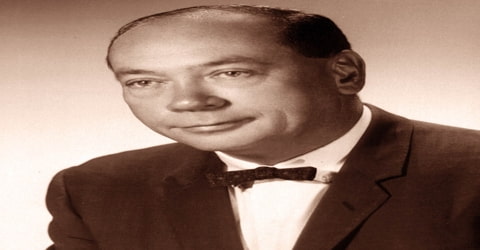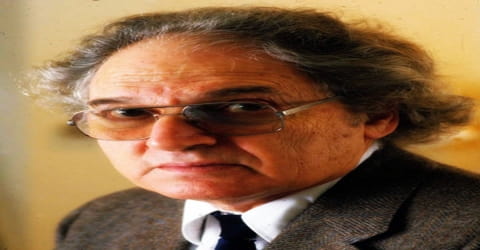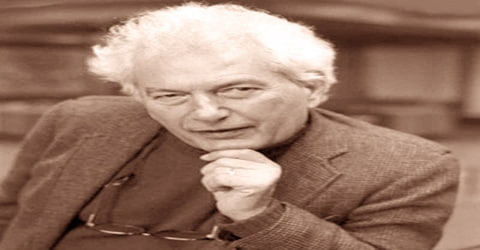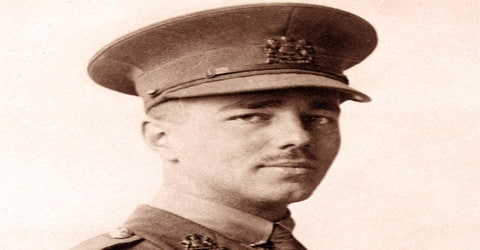Biography of Earl W. Sutherland Jr.
Earl W. Sutherland Jr. – American pharmacologist and biochemist.
Name: Earl Wilbur Sutherland Jr.
Date of Birth: November 19, 1915
Place of Birth: Burlingame, Kansas, United States
Date of Death: March 9, 1974 (aged 58)
Place of Death: Miami, Florida, United States
Occupation: Pharmacologist, Biochemist
Father: Earl W. Sutherland Sr.
Mother: Edith M. Hartshorn
Spouse/Ex: Mildred Rice (m. 1937), Dr. Claudia Sebeste Smith (m. 1964)
Early Life

An American pharmacologist and biochemist, Earl W. Sutherland Jr. were born on November 19, 1915, in Burlingame, Kansas, U.S. He was awarded the 1971 Nobel Prize for Physiology or Medicine for isolating cyclic adenosine monophosphate (cyclic AMP) and demonstrating its involvement in numerous metabolic processes that occur in animals. He was the five children of Edith M. Hartshorn, and Earl W. Sutherland Sr.
Sutherland’s early ambition was to become a doctor and so after receiving his B.Sc. degree, he entered Washington University School of Medicine to obtain his MD. Instead, he was persuaded by Carl Ferdinand Cori to take up medical research. Consequently, he returned to Washington University after the Second World War and took up research work on epinephrine. Subsequently, he also showed how adrenaline regulates the breakdown of sugar, which in turn provides energy to the body. Identification of glucagon as a hormone is also another of his major achievements. Later, he identified the importance of liver phosphorylase (LP) in the process of glycogenolysis.
Sutherland Jr. taught at the Washington University School of Medicine from 1945 to 1953 and at the Case Western Reserve University, where he spent ten years. He later moved to the Vanderbilt University School of Medicine Nashville, Tennessee as professor of physiology where he remained until 1973.
However, his greatest achievement was made at Western Reserve University, where working with his team, he discovered cyclic adenosine monophosphate (Cyclic AMP) and showed how this ‘second messenger’ helped the effects of hormones like glucagon and adrenaline to transfer into cells. However, he was more than an eminent researcher; he also acted as advisor to many great scientists. His love for fishing was equally well-known.
Childhood, Family and Educational Life

Earl W. Sutherland, Jr., in full Earl Wilbur Sutherland, Jr., was born on 19th November 1915, in Burlingame, Kansas, U.S. His father, Earl W. Sutherland Senior, was initially a farmer in New Mexico and Oklahoma. Later he shifted to Burlingame, where he opened a store and ran dry goods business for forty years. Earl grew up under the direct supervision of his mother, Edith M. Hartshorn, who had her education at a ‘ladies’ college’ and some practical training in nursing. He was the fifth of his parents’ six children. Initially, they were quite well off and lived in a spacious house. Later, as the great depression of 1929 set in, their financial condition deteriorated.
Sutherland had a very comfortable childhood and had his schooling at Burlingame Junior/Senior High School, graduating from there in 1932. During his school days, he was a keen sportsman and was especially good in tennis. Fishing was also another of his favorite activity. He also spent a lot of time swimming and hunting small animals like rabbits and squirrels with his own shotgun.
In 1933, at the age of 17, Sutherland enrolled in Washburn College; a school located in Topeka, Kansas and began the pursuit of a Bachelor of Science degree. In order to pay for tuition, he worked throughout his undergraduate years as a medical staff assistant at a local hospital. Sutherland graduated in 1937, at the age of 21. He was then accepted to Washington University School of Medicine in St. Louis, Missouri, where he developed a strong mentorship with Carl Ferdinand Cori. In 1942, Sutherland graduated with a Doctor of Medicine.
Personal Life
In 1937, Earl W. Sutherland, Jr. married Mildred Rice, the same year that he graduated from Washburn College. In 1944, during World War II, Sutherland was called into service as a battalion surgeon under General George S. Patton and was later sent to Germany, where he served as a staff physician in a military hospital until 1945. He had two sons and a daughter with Mildred Rice. Their marriage ended in divorce in 1962.
In 1964, Sutherland married Claudia Sebeste Smith, who at that time was working as the assistant dean at the Vanderbilt University. They shared many interests and often went out on fishing trips. The couple remained married until his death in 1974.
Career and Works
While studying at the Washington University School of Medicine, in 1940, Earl W. Sutherland Jr. had his first encounter with research as an assistant in pharmacology in the laboratory of Carl Ferdinand Cori, who won a Nobel Prize in Physiology or Medicine in 1947 for his discovery of the mechanism of glycogen metabolism. Under Cori’s guidance, Sutherland conducted research on the effects of the hormones epinephrine and glucagon on the breakdown of glycogen to glucose. In 1942, he worked as an intern at Washington University’s Barnes Hospital. After receiving his medical degree from Washington University in 1942, Sutherland served as a World War II army physician.
During World War II, Earl W. Sutherland Jr. served in the army as a battalion surgeon under General George S. Patton. Sutherland was later sent to Germany to work as a staff physician in a military hospital, where Sutherland remained until 1945. At that time, he could not make up his mind if he should go into practice or devote himself to research. Finally, Cori was able to convince him to go into medical research.
On his returned, Sutherland Jr. continued his research at the Cori Laboratory. Aside from his research career, Sutherland also entered into the academic field first becoming an instructor in pharmacology at the Washington University School of Medicine from 1945 to 1946. Sutherland became an instructor in biochemistry from 1946 to 1950 and later as an assistant professor of biochemistry from 1950 to 1952. From 1952 to 1953, Sutherland became an associate professor in biochemistry.
The stint at the University of Washington was highly productive for Sutherland. Here, he worked with Christian de Duve on the actions of the hormone at the molecular level and established that hyperglycemic-glycogenolytic, later renamed glucagon, came from the alpha cells of Langerhans. He thus established that glucagon was a hormone. Over time, Sutherland became an independent researcher and began to make an intense study of enzyme phosphorylase. He made several discoveries on the metabolism of glycogen and helped to identify the importance of liver phosphorylase (LP) in the process of glycogenolysis.
Earl W. Sutherland, Jr. moved to Cleveland, Ohio for a position as a professor of pharmacology and chairman of the department of pharmacology at the school of medicine at Case Western Reserve University (formerly, Western Reserve University), in 1953. There, he collaborated with Theodore W. Rall, also a professor of pharmacology, who was to become a lifelong research partner. Together, they conducted further research on the mechanism of hormone action at the molecular level. During his ten years at Case Western Reserve University, Sutherland made several ground-breaking discoveries that led to the identification of cyclic adenosine monophosphate, or cyclic AMP, and its role as a secondary messenger.
They also analyzed several of its properties and published the results in a series of papers, titled ‘The Relationship of Epinephrine and Glucagon to Liver Phosphorylase’. The last paper of this series, titled ‘The Relationship of Epinephrine and Glucagon to Liver Phosphorylase: IV Effect of Epinephrine and Glucagon on the Reactivation of Phosphorylase in Liver Homogenates’, was published in 1956. In it, the researchers described how they had used cell homogenate to hormone pathway. Using cell homogenate was a novel idea because at that time it was believed that to study hormones one needed to use intact cells. Therefore, this in itself was a path-breaking discovery. More importantly, the work also led to the discovery of cyclic adenosine monophosphate, or cyclic AMP.
Earl W. Sutherland Jr. became a professor of physiology at Vanderbilt University School of Medicine in Nashville, Tennessee, in 1963. His position allowed him to devote more time to his research. He continued his work on cyclic AMP, receiving financial support from the Career Investigatorship awarded to him by the American Heart Association in 1967. He held his teaching title at Vanderbilt University until 1973. He served as a member of the editorial board for the Biochemical Preparation Journal from 1951 to 1956. From 1957 to 1958, Sutherland also served on the Journal of Pharmacology and Experimental Therapeutics.
Awards and Honor
In 1969, Earl W. Sutherland Jr. won Torald Sollman Award in Pharmacology and Gairdner Foundation International Award.
In 1970, Sutherland received the Albert Lasker Award for Basic Medical Research and Dickson Prize in Medicine.
In 1971, Earl W. Sutherland Jr. received Nobel Prize in Physiology or Medicine “for his discoveries concerning the mechanisms of the action of hormones”. In the same year, he also won an Achievement Award from the American Heart Association.
Sutherland was awarded National Medal of Science by U.S. President Richard Nixon, in 1973. In the same year, he was also was elected a member of the National Academy of Sciences.
Death and Legacy
Earl W. Sutherland, Jr. died on 9th March 1974, at age 58 in Miami, Florida, United States, of internal bleeding from surgical complications after suffering a massive esophageal hemorrhage. His remains were buried in Burlingame City Cemetery, Burlingame, Kansas.
Earl W. Sutherland, Jr. is best remembered for his discovery of cyclic adenosine monophosphate. After years of experimenting, he and his team established that cyclic AMP is a ‘second messenger system’ and has important functions in many biological processes. While working with liver phosphorylase at Western Reserve University, he and his team observed an unknown heat-stable factor being produced in the presence of the hormones like epinephrine and glucagon. Later they observed that the factor provided stimulation for the formation of liver phosphorylase. This factor was later termed cyclic AMP. Sutherland also showed that the effects of hormones like glucagon and adrenaline, which cannot pass through the plasma membrane, is transferred into cells with the help of this cyclic AMP.
Earl W. Sutherland, Jr. was also a member of various scientific societies which included the American Society of Biological Chemists, the American Chemical Society, the American Society for Pharmacology and Experimental Therapeutics, the American Association for the Advancement of Science, and Sigma Xi. From 1951 to 1956, Sutherland was a member of the editorial board for the Biochemical Preparations Journal. The editorial board of the Journal of Pharmacology and Experimental Therapeutics sought is attention from 1957 to 1958.
Information Source:
















